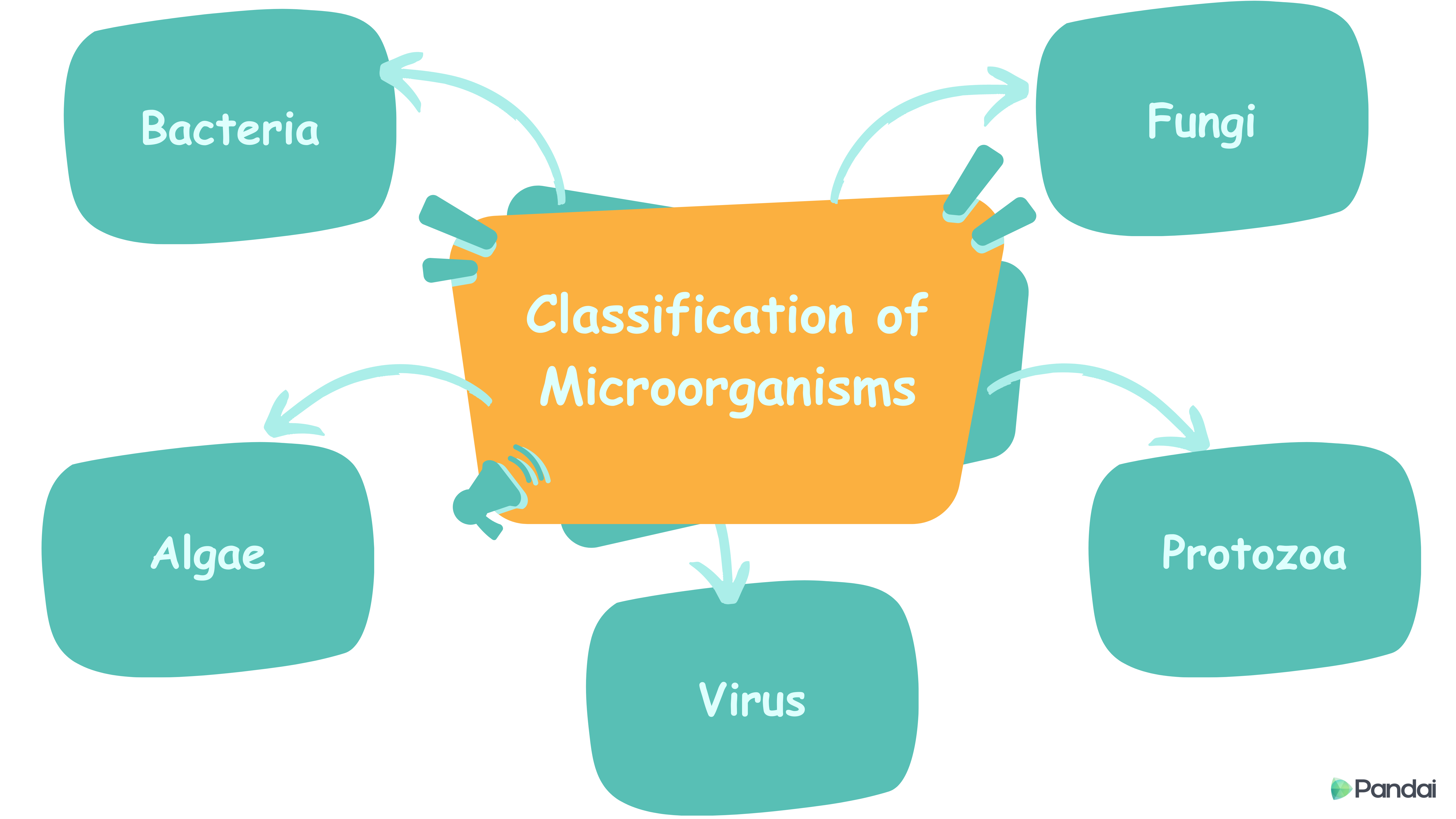| 1.1 |
World of Microorganisms |

| Classification of microorganisms |
| Size |
0.2 µm - 10 µm |
| Shape |
Coccus, bacillus, spirilla, vibrio |
| Nutrition |
Autotrophic, saprophytic, parasitic |
| Habitat |
Air, water, soil, food, bodies of other organisms |
| Reproduction |
Asexual: binary fission
Sexual: conjugation
|
| Example |
Bacillus sp., Vibro sp. |
|
| Size |
10 µm - 100 µm |
| Shape |
Spherical, filamentous |
| Nutrition |
Saprophytes, parasitic |
| Habitat |
Places with decaying matter, faeces, animal skin and food |
| Reproduction |
Asexual: budding, spore formation
Sexual: conjugation
|
| Example |
Mushroom, yeast |
|
| Size |
5 µm - 250 µm |
| Shape |
Spherical, spindle-shaped, irregular shaped |
| Nutrition |
Saprophytic, parasitic |
| Habitat |
Aquatic habitats, damp place, bodies of living organisms |
| Reproduction |
Asexual: binary fission
Sexual: conjugation
|
| Example |
Paramecium sp., Ameoba sp |
|
| Size |
0.02 µm - 0.4 µm |
| Shape |
Spherical, helical, polyhedral, complex |
| Nutrition |
- |
| Habitat |
Lives in living host cells, forming crystals outside living cells |
| Reproduction |
- |
| Example |
Virus influenza A |
|
| Size |
1 µm - 100 µm |
| Shape |
Spherical, oval-shaped, filamentous |
| Nutrition |
Autotrophic |
| Habitat |
Aquatic habitats, damp place |
| Reproduction |
Asexual: binary fission, spore formation
Sexual: conjugation
|
| Example |
Chlamydomonus sp.
Spirogyra sp.
|
|
|